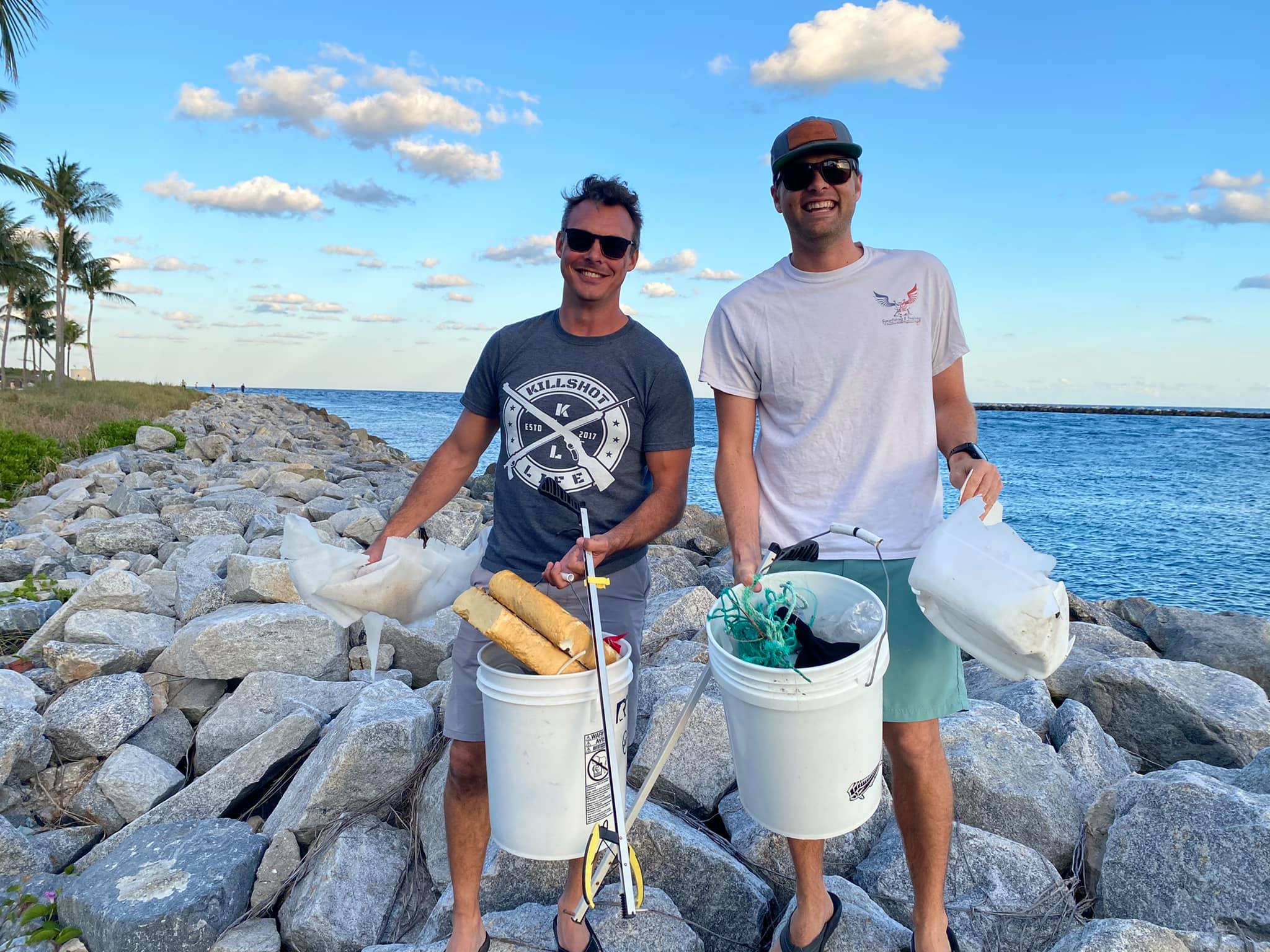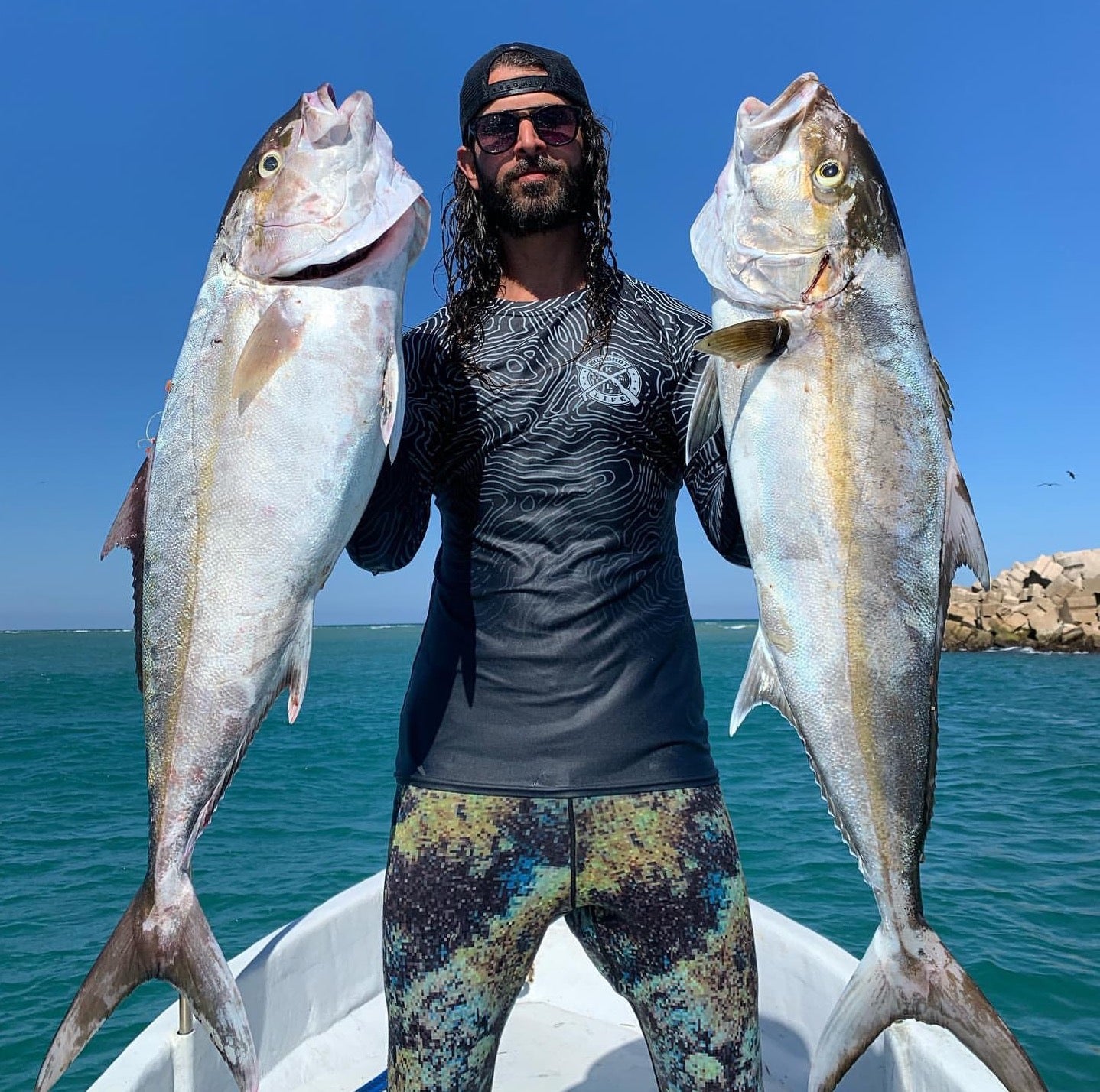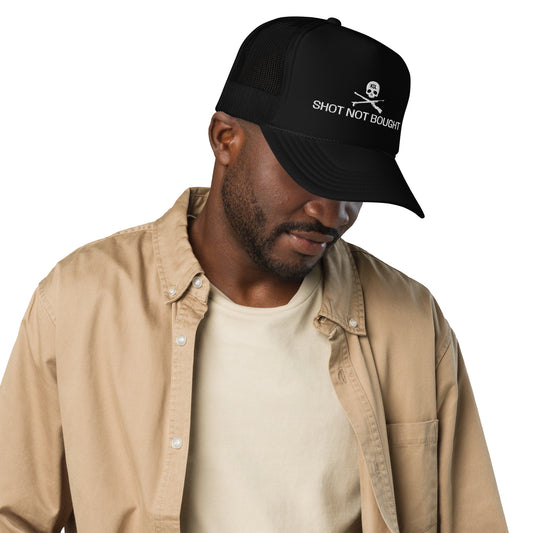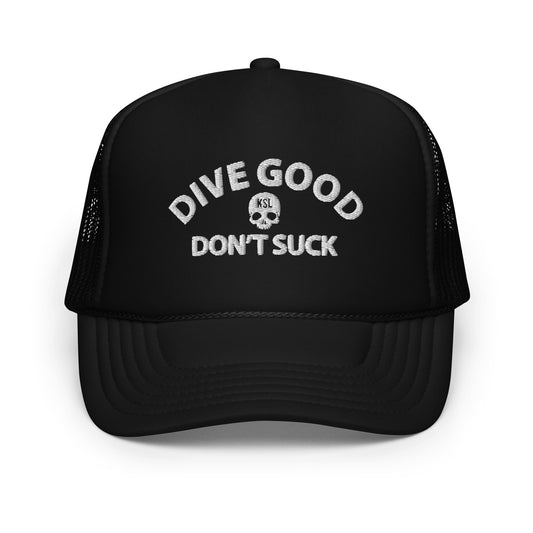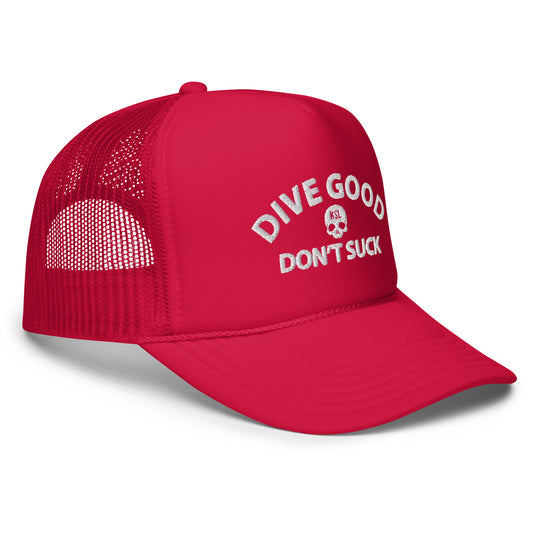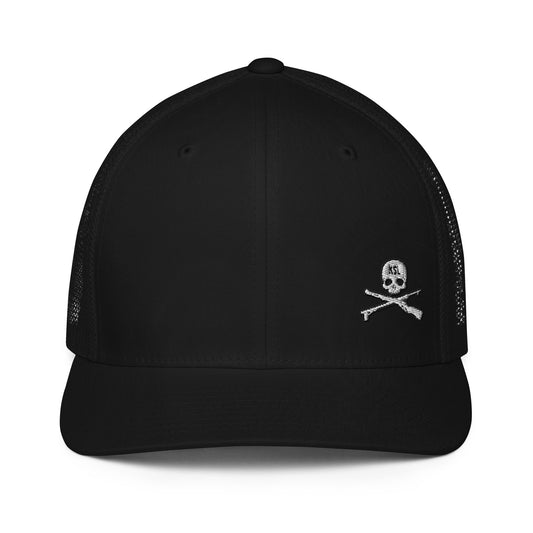How to Spearfish: A Comprehensive Guide to Spearfishing 101
Share

Spearfishing is an exhilarating and ancient method of fishing that involves catching fish using a spear or spear-like tool, usually while free-diving, scuba diving, or snorkeling. It combines the excitement of hunting with the beauty and challenge of underwater exploration. This guide will walk you through everything you need to know about spearfishing, from the basics to advanced techniques, ensuring you have the knowledge to get started safely and effectively. Follow the instructions below to get started, and if you're looking for some suggestions on gear, we've put together some equipment lists.
1. Introduction to Spearfishing
Spearfishing dates back thousands of years, with evidence suggesting its practice in ancient civilizations across the world. It is a method of fishing that relies on stealth, skill, and patience, offering a sustainable and rewarding way to catch fish without the need for hooks, lines, or nets. In modern times, spearfishing is practiced both as a sport and a way of gathering food, with participants often emphasizing environmental conservation and respect for marine ecosystems.
Spearfishing can be performed in a variety of environments, including coastal reefs, open oceans, freshwater lakes, and rivers. While it is often associated with tropical waters and coral reefs, many spearos (spearfishers) enjoy spearfishing in temperate or cold waters, hunting for species unique to those areas.
2. Types of Spearfishing
There are several methods of spearfishing, each with its own set of challenges and rewards. The method you choose will depend on your location, experience level, and the type of fish you're targeting.
A. Freedive Spearfishing
Freedive spearfishing is the most common form of spearfishing, where the diver holds their breath while diving underwater to hunt. It requires good breath-holding techniques and swimming ability. This method is popular because it doesn’t require heavy or expensive equipment beyond basic gear like a speargun, wetsuit, mask, fins, and weight belt.
Advantages of freedive spearfishing:
- Lightweight and mobile
- Requires minimal equipment
- Great for staying connected with nature
Challenges:
- Requires training in breath-holding techniques
- Can be physically demanding
B. Scuba Spearfishing
Scuba spearfishing involves using scuba diving equipment to hunt fish at deeper depths. This method allows divers to stay underwater for extended periods, giving them more time to select and hunt their prey. However, some regions have regulations that limit or ban spearfishing while using scuba gear, as it gives the diver a significant advantage.
Advantages of scuba spearfishing:
- Extended time underwater
- Allows you to reach greater depths without concern for breath-holding
- Ideal for targeting deeper fish species
Challenges:
- Heavier gear
- Regulatory restrictions in some areas
- Less stealthy than freediving
C. Pole Spearfishing
Pole spearfishing uses a hand-held pole spear rather than a speargun. A pole spear is a long, flexible rod with a sharp point or spearhead at one end. The spear is powered by a rubber sling or band, which is pulled back and released by the spearfisher to propel the spear forward. This method requires close proximity to the fish and is often seen as a more traditional or primitive form of spearfishing.
Advantages of pole spearfishing:
- Simple and affordable equipment
- Ideal for shallow-water hunting
- More challenging and rewarding
Challenges:
- Requires close proximity to fish
- Less powerful than spearguns
D. Bluewater Hunting
Bluewater hunting is a more advanced type of spearfishing that takes place in open water, away from reefs or shorelines. This method targets larger pelagic species such as tuna, wahoo, mahi-mahi, and marlin. Because it takes place in deeper waters, bluewater hunting often requires a boat, strong swimming skills, and specialized gear like floatlines and breakaway rigs to help manage larger fish.
Advantages of bluewater hunting:
- Opportunity to catch large, powerful fish
- Great for adventure and exploration
Challenges:
- Requires more experience and specialized gear
- Can be dangerous due to the presence of larger marine predators
3. Essential Gear for Spearfishing
Before diving into the water, you’ll need the right gear. Spearfishing equipment varies depending on the type of spearfishing you’re doing, but the following items are considered essential for most spearfishing scenarios.
A. Speargun
A speargun is the primary tool used in modern spearfishing. It uses rubber bands (band-powered spearguns) or compressed air (pneumatic spearguns) to propel a spear or shaft toward the target fish.
- Band-powered spearguns are more popular among spearos because they are quieter, require less maintenance, and are more versatile in different conditions.
- Pneumatic spearguns are more powerful and compact, making them better suited for certain types of hunting, especially in murky water or areas with limited visibility.
When choosing a speargun, consider factors like power, accuracy, and range. Beginners typically start with a shorter speargun (70-90 cm) for maneuverability, while more experienced spearos may opt for longer spearguns for greater range in open water.
B. Pole Spear or Hawaiian Sling
For those who prefer a simpler approach, a pole spear or Hawaiian sling is a great alternative to the speargun. These tools require you to get closer to the fish and rely on your strength and technique to land the catch.
- Pole spears consist of a long rod with a sharp tip and are powered by a rubber band.
- Hawaiian slings function similarly to a slingshot, using a band to propel the spear forward.
C. Wetsuit
A good wetsuit is essential for keeping you warm and protecting your skin from sunburn, jellyfish stings, and abrasions. Wetsuits come in various thicknesses, ranging from 1.5 mm to 7 mm, depending on the water temperature. Thicker wetsuits are necessary for cold water, while thinner suits are ideal for warmer waters.
Look for a wetsuit designed specifically for spearfishing, as these often come in camouflage patterns that help you blend in with the environment, making it harder for fish to detect you.
D. Mask, Snorkel, and Fins
A properly fitting mask is essential for clear vision underwater. Choose a mask with a low internal volume to make it easier to equalize while diving.
A snorkel allows you to breathe while floating on the surface without lifting your head out of the water. It’s best to choose a snorkel with a flexible, comfortable mouthpiece.
Fins provide the propulsion you need to swim efficiently and dive deep. Spearfishing fins are typically long and stiff, allowing for powerful kicks. Carbon fiber and fiberglass fins are lightweight and durable, while plastic fins are more affordable and ideal for beginners.
E. Weight Belt
A weight belt helps counteract the buoyancy of your wetsuit, allowing you to descend more easily. The amount of weight needed will depend on your body composition, wetsuit thickness, and the type of water (saltwater or freshwater).
It’s important to properly adjust your weight belt to ensure you can still swim comfortably and, if necessary, quickly ascend to the surface.
F. Dive Knife
A dive knife is a critical safety tool for cutting through fishing lines, kelp, or netting if you get tangled. It can also be used to quickly and humanely dispatch a fish after spearing it.
Choose a knife that is compact, rust-resistant, and easy to access during a dive.
G. Float and Floatline
A float and floatline system is commonly used in bluewater spearfishing or when targeting larger fish. The floatline connects your speargun to a buoyant float on the surface, allowing you to track and control the fish after it is speared.
This system prevents large fish from dragging you underwater and helps you avoid losing your gear.
4. Learning the Basics of Spearfishing
Now that you have the necessary gear, it’s time to learn the basics of spearfishing, including key techniques, safety measures, and environmental considerations.
A. Breath-Holding and Freediving Techniques
Breath-holding, or apnea, is a fundamental skill in freedive spearfishing. The better your breath-holding abilities, the longer you can stay underwater and hunt.
To improve your breath-hold, focus on the following techniques:
- Controlled breathing: Before diving, take deep, slow breaths to oxygenate your body and calm your mind.
- Relaxation: Staying calm and relaxed conserves energy and extends your breath-hold time.
- Equalizing pressure: Learn how to equalize the pressure in your ears and sinuses as you descend, using techniques like the Valsalva or Frenzel maneuver.
Start with shallow dives and gradually build your breath-hold capacity over time.
B. Stalking and Ambushing Fish
Spearfishing requires stealth and patience. Fish are highly sensitive to movement and sound, so it’s important to move slowly and deliberately. There are two primary hunting strategies:
- Stalking: Approach fish slowly and from a distance, taking advantage of cover such as rocks, coral, or seaweed to stay hidden.
- Ambushing: Find a spot where fish are likely to pass by and wait for them to come within range of your speargun.
Avoid making sudden movements, and try to blend into your surroundings by using camouflage wetsuits or keeping still near the ocean floor.
C. Shot Placement and Accuracy
Accurate shot placement is crucial for ethical spearfishing. Aim for the fish's head or just behind the gills for a quick and humane kill. A poorly placed shot can injure the fish and cause it to escape, making it harder to retrieve.
Practice shooting at stationary and moving targets to improve your accuracy and confidence. Over time, you’ll develop an instinct for knowing when to pull the trigger and when to wait for a better opportunity. Patience is key, as you’ll often only have one shot to secure your catch.
D. Understanding Fish Behavior
Understanding fish behavior can significantly improve your success as a spearfisher. Different species exhibit different patterns of movement, feeding habits, and levels of aggression. By observing these behaviors, you can predict where fish are likely to be and how they will respond to your presence.
Some key behaviors to observe include:
- Schooling fish: Fish that swim in schools tend to stay together for protection. If you spot a school of fish, remain calm and observe their movements, waiting for a clear shot at an individual fish.
- Territorial fish: Some species are highly territorial and may return to their home base if startled. If you spook a fish, don’t panic—it might come back to investigate if you remain still and quiet.
- Feeding behavior: Fish are often more active and less cautious when they are feeding. Look for areas with abundant marine life, such as reefs or kelp forests, where fish are likely to be hunting for food.
By learning the habits of the species you’re targeting, you’ll be better equipped to hunt them effectively.
5. Spearfishing Safety and Best Practices
Spearfishing is an incredibly rewarding activity, but it also comes with inherent risks. Prioritizing safety is essential to ensure you enjoy your time underwater without unnecessary accidents or dangers.
A. Never Dive Alone
One of the most important rules of spearfishing is to never dive alone. Always bring a buddy with you, even if you’re an experienced diver. A dive partner can assist you in the event of an emergency, whether it’s a shallow-water blackout, equipment failure, or an encounter with marine wildlife. Always practice the "one up, one down" rule: while one diver is underwater, the other stays on the surface to monitor and assist if necessary.
B. Know Your Limits
Spearfishing, especially freedive spearfishing, can be physically demanding. It’s easy to get caught up in the excitement of the hunt and push yourself beyond your limits. However, overextending your abilities can lead to dangerous situations, such as shallow-water blackout (a loss of consciousness due to a lack of oxygen).
Learn to recognize the signs of fatigue and low oxygen levels, such as dizziness, tunnel vision, or an overwhelming urge to breathe. If you experience any of these symptoms, return to the surface immediately and take a break. Never push yourself beyond what you’re comfortable with.
C. Understand the Local Environment
Before diving, familiarize yourself with the local environment, including the types of fish that inhabit the area, underwater hazards, and any local regulations or restrictions on spearfishing. Some regions have protected marine reserves where spearfishing is prohibited, and certain species of fish may be off-limits to ensure the sustainability of the ecosystem.
In addition, understanding the tides, currents, and weather conditions will help you plan your dives more effectively. Strong currents and high waves can make diving more challenging and dangerous, so it’s important to dive in calm, predictable conditions whenever possible.
D. Handling Marine Wildlife
While spearfishing, you may encounter marine wildlife such as sharks, jellyfish, or stingrays. While most marine animals are not aggressive, it’s essential to remain calm and avoid provoking them. If you encounter a shark, don’t panic or make sudden movements. Maintain eye contact, and slowly back away while keeping your speargun or pole spear between you and the shark. In most cases, the shark will lose interest and swim away.
It’s also important to avoid spearfishing near areas where sharks are known to frequent, such as seal colonies or fishing harbors, as these locations can attract larger predators.
6. Fish Handling and Care
Once you’ve successfully speared a fish, it’s essential to handle it properly to preserve the quality of the meat and ensure an ethical harvest. Here are some tips for handling and caring for your catch.
A. Dispatching the Fish
After spearing the fish, you’ll need to dispatch it quickly and humanely. The most effective way to do this is by using a technique called "iki jime." This involves inserting a knife or spike directly into the brain of the fish, causing instant death. By dispatching the fish quickly, you minimize its suffering and ensure that the meat remains fresh.
B. Securing Your Catch
Once the fish is dead, it’s important to secure it to prevent it from attracting predators like sharks. Many spearfishers use a fish stringer or attach the fish to a floatline to keep the catch away from their body. This also makes it easier to transport the fish back to your boat or the shore.
C. Bleeding and Gutting the Fish
To improve the quality of the meat and remove any unwanted flavors, it’s a good idea to bleed the fish as soon as possible. To do this, make a small incision near the gills or tail and allow the blood to drain. Once the fish has been bled, you can gut it by making an incision along the belly and removing the internal organs.
After gutting the fish, store it in a cooler or on ice to keep it fresh until you’re ready to prepare it.
7. Conservation and Sustainability
Spearfishing is one of the most sustainable forms of fishing because it allows you to target specific species without the risk of bycatch. However, it’s essential to practice responsible spearfishing to ensure the health of marine ecosystems for future generations.
A. Follow Local Regulations
Every region has its own set of regulations regarding fishing seasons, bag limits, and protected species. Make sure you’re familiar with these rules before you go spearfishing to avoid unintentionally harming the environment or breaking the law. In many areas, spearfishing certain species, such as endangered or slow-growing fish, is illegal to protect their populations.
B. Selective Hunting
One of the benefits of spearfishing is that it allows you to be highly selective about the fish you catch. Always aim for mature, legal-sized fish, and avoid spearing fish that are too small or belong to a protected species. By focusing on sustainable species and avoiding overfished populations, you can minimize your impact on the marine ecosystem.
C. Avoid Overfishing
Spearfishing is a rewarding experience, but it’s important not to take more than you need. Overfishing can lead to declines in fish populations and disrupt the balance of the ecosystem. Stick to the local bag limits and only take what you plan to eat or share with others. The goal is to enjoy the sport while contributing to the health and sustainability of the environment.
8. Advanced Spearfishing Techniques
Once you’ve mastered the basics of spearfishing, you may want to explore more advanced techniques and challenges. Here are a few advanced spearfishing methods that can take your skills to the next level.
A. Bluewater Hunting
Bluewater hunting is one of the most challenging and exciting forms of spearfishing. It involves hunting large pelagic species like tuna, wahoo, and mahi-mahi in open water, far from the shore or reefs. Because these fish are powerful and fast, bluewater hunters need specialized gear, such as floatlines, breakaway rigs, and large spearguns.
To be successful in bluewater hunting, you’ll need to develop strong freediving skills, as well as the ability to track and approach fast-moving fish in an open environment.
B. Deep Spearfishing
Deep spearfishing involves diving to greater depths in search of species that live on or near the ocean floor. This type of spearfishing requires excellent breath-holding ability and advanced equalization techniques to handle the increased pressure at depth. It’s essential to practice deep-diving safety and avoid pushing your limits, as diving at depth increases the risk of shallow-water blackout.
C. Night Spearfishing
Night spearfishing is a unique and rewarding experience that offers a new perspective on the underwater world. Many species of fish are more active at night, making it easier to find and approach them. However, night spearfishing requires additional safety precautions, such as using a powerful dive light, staying close to your dive buddy, and being extra cautious of marine predators.
9. Conclusion
Spearfishing is a thrilling and challenging sport that connects you with nature in a way few other activities can. It requires skill, patience, and respect for the marine environment. Whether you’re spearfishing in shallow reefs, deep waters, or open oceans, each dive offers a new adventure and the chance to test your abilities as a hunter.
As you continue your spearfishing journey, always prioritize safety, conservation, and ethical practices. By respecting the underwater world and its inhabitants, you’ll not only become a better spearfisher but also contribute to the preservation of our oceans for generations to come.
Happy spearing!
Gear up with these equipment lists!
At KILLSHOT Life, we embody the spirit of the ethical hunter, and we invite you to be part of this journey with us. Follow us on social media and become a part of a community that values integrity, skill, and respect for the wild.
Click here to find KILLSHOT Life on Instagram.

